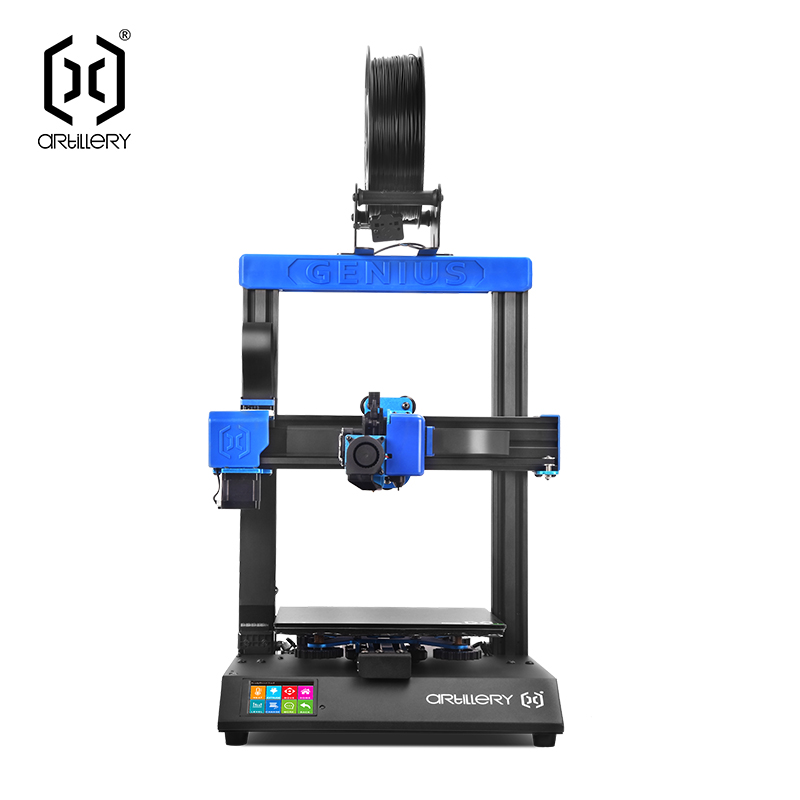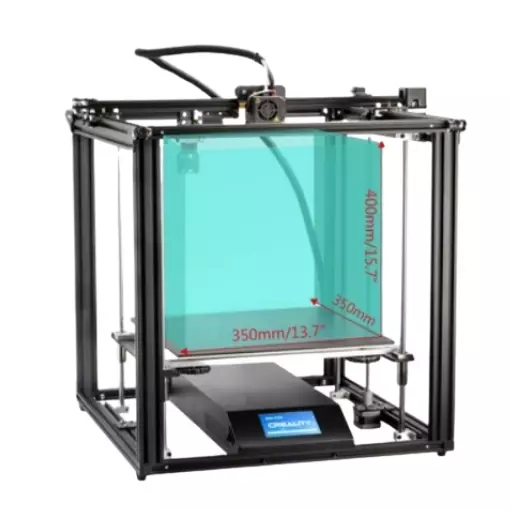Compare Genius Pro vs Ender 5 Plus
Comparison between the best 3D printers
Choose the best 3D printer at the best price. The cheapest 3D printers are here.
Buy a 3D printer here with 3D Fila.
 |
 |
|
| Model | Genius Pro[BUY Genius Pro] |
Ender 5 Plus[BUY Ender 5 Plus] |
| Printing Material | Filament | Filament |
| Buy Filament for Artillery Genius Pro | Buy Filament forCreality 3D Ender 5 Plus | |
| Estimated price | $309,00 | $599,00 |
| Manufacturer | Artillery | Creality 3D |
| Release Year | 2022 | 2019 |
| Print Volume [mm] | 220x220x250 | 350x350x400 |
| Printer Size [mm] | 430x390x590 | 632x619x666 |
| Weight [kg] | 9,6 | 18,2 |
| Power Loss Recovery | YES | YES |
| Enclosed printer | NO | NO |
| Bed Leveling | Automatic | Automatic |
| Filament End Sensor | YES | YES |
| Bed type | Heated | Heated |
| Power supply system | Direct Drive | Bowden |
| Standard nozzle | 0,4 | 0,4 |
| Maximum Nozzle Temperature [°C] | 240 | 260 |
| Maximum Bed Temperature [°C] | 120 | 100 |
| Maximum printing speed [mm/s] | 150 | 180 |
| Filament holder | YES | YES |
| Camera for supervision | NO | NO |
| Recommended filaments | PLA, PETG, Tritan, Flex, ABS | PLA, TPU, ABS, PETG |
| Recommended slicers | Cura, Simplify, Slic3r, IdeaMaker | Cura, Simplify, Slic3r |
| Maximum Resolution [mm] | 0,1 | 0,1 |
| Processor | Ruby 32bit | 32 bits |
| Display | Touchscreen TFT 3,5'' | Touchscreen TFT 4,3'' |
| Power Supply | 24V / 504W | |
| Connectivity | SD / USB | SD / USB |
| Operating systems | Windows, Mac, Linux | Windows, Mac, Linux |
| Date of registration in the system | 2022-11-07 | 2021-04-14 |
| Release date | 2022 | 2019 |
| Extra features | The Artillery Genius Pro is a standout 3D printer with a fast-heating AC tempered glass print bed and a sleek design with a black aluminum base and blue accents. It features a Titan-style direct extruder and a 32-bit Ruby mainboard. Despite its advanced feature set, it struggles to maintain print quality, requiring frequent adjustments and calibrations, and its glued glass bed makes cleaning and replacement difficult. | The Ender 5 Plus offers a large print volume (350x350x400 mm) and fast assembly. It includes a BLTouch sensor, but with range limitations. It stands out for its dimensional accuracy, although it requires adjustments to the slicer settings. Despite the noise, its integrated design saves space, and includes features such as a filament sensor and power resumption. Ideal for large projects, it requires refinement in the settings for high-quality prints. |
| Support for multiple colors and materials (AMS and CFS) | NO | NO |
Notes * |
||
| Cost-benefit | 7 / 10 | 6 / 10 |
| Hardware | 2.8 / 10 | 2 / 10 |
| Tela | . | . |
| Print volume | 3 / 10 | 4 / 10 |
| Performance | 1 / 10 | 1 / 10 |
| [BUY Genius Pro] | [BUY Ender 5 Plus] |
Conclusion |
| In conclusion, when comparing the Artillery Genius Pro and the Creality 3D Ender 5 Plus, several key aspects emerge that can help potential buyers make an informed decision. The Artillery Genius Pro comes at a lower price and offers good build quality and features such as a direct drive system and a power loss recovery function, making it a compelling option for those on a budget or who are new to 3D printing. However, its smaller print volume and reported challenges with print quality and bed maintenance may limit its overall performance for larger or more intricate projects. On the other hand, the Ender 5 Plus, while priced higher, provides a significantly larger print volume and is designed for high-dimensional accuracy. It incorporates features like automatic bed leveling and a power resumption function, which enhance its usability, especially for larger projects. However, potential users may need to fine-tune slicer settings to achieve optimal print quality, and its increased size may require more space. Ultimately, the choice between these two printers hinges on the user’s specific needs. Those who prioritize a lower initial investment and are willing to navigate some challenges may find the Genius Pro to be a suitable option. Conversely, for those seeking a robust and spacious printer capable of handling larger prints with high accuracy, the Ender 5 Plus justifies its higher price through its performance capabilities and build quality. Each printer has its advantages and drawbacks, making the decision largely dependent on individual priorities such as budget, intended use, and preference for print volume. |

